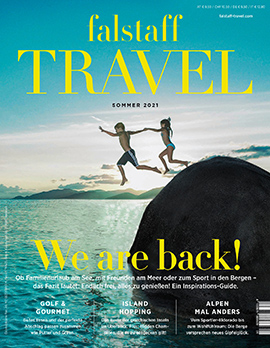
The Canary Islands: Bliss in the middle of the Atlantic
Whether it's wine, cuisine or historic cities - the Canary Islands are full of surprises and unique experiences that you have to see to believe.
October 3, 2024
The village of Macayo on La Gomera. © Turismo de Islas Canarias
Throughout history, the Canary Islands have been an vital hub in the Atlantic, creating a unique blend of fascinating culture and delectable cuisine. From wine tastings on the fertile volcanic terroirs to traditional festivals that reflect the heart of the islands, the archipelago offers a wealth of experiences.
A special kind of wine experience
The Bodegas Bentayga winery on Gran Canaria. © Turismo de Islas Canarias
The vintages of the Canary Islands are a reflection of their origins. The fertile volcanic soil creates a unique aroma that is appreciated by sommeliers worldwide. On Lanzarote, where the vines are planted in special, wind-protected hollows, the famous Malvasia wine is produced, which thrives in almost surreal conditions - the green plants contrast heavily with the barren volcanic surroundings. The vintners in La Geria, Lanzarote's most important wine region, offer guided tours where you can get to know both the wine and the imposing landscape.
Tenerife also has a rich wine culture: the regions of Tacoronte-Acentejo and Valle de La Orotava are characterized by special minerality, which helps create aromas of tropical fruits and spices. There are also 17 wineries on La Palma. These small, family-run businesses offer an insight into the centuries-old tradition of viticulture on the Canary Islands.
A feast for the senses
Fresh mussels straight from the Atlantic. © Turismo de Islas Canarias
The Canary Islands also offer a breadth of culinary treasures beyond wine - a result of the archipelago's rich history and culture. The traditional cuisine of the islands is based on simple, high-quality ingredients that are prepared with a lot of care. Particularly popular dishes include grilled fish fresh from the sea and the famous papas arrugadas - small potatoes boiled in salted water and served with a spicy mojo sauce.
The latter is an indispensable part of Canarian cuisine. Mojo sauce comes in a green and a red version and consists of paprika, garlic, olive oil, vinegar, herbs and spices. Green mojo is usually served with fish dishes, while mojo rojo has a stronger spiciness and goes perfectly with meat dishes. Such as carne de cabra - a stew made from goat meat that is cooked very slowly. Typical Canary island desserts include bienmesabe - an almond cream served with ice cream or pastries - and frangollo, a traditional pudding made from corn flour, milk, sugar and cinnamon.
Historic cities
The old town of Vegueta on Gran Canaria. © Turismo de Islas Canarias
All these delicacies are best enjoyed in one of the many historic towns and villages - witnesses to the islands' eventful history. One highlight is the UNESCO World Heritage town of La Laguna on Tenerife. Founded in the 15th century, the town boasts well-preserved colonial buildings, manor houses and churches. Another jewel of local architecture is Vegueta in Las Palmas de Gran Canaria. Its venerable merchant's houses and churches date back to the time when the Canary Islands were a crossroads between Europe, Africa and the Americas. Santa Cruz de La Palma and Teguise on Lanzarote are also worth a visit - both are full of historical treasures.
Tradition up close
Folklore on La Gomera. © Turismo de Islas Canarias
However, the Canary Islands are not only home to architectural gems, but also a living cultural heritage. Numerous museums, galleries and events allow you to immerse yourself in the local history and culture. From the art of the Guanches - the original inhabitants of the archipelago - to the modern art scene, there is something for everyone. Numerous traditions and customs are still celebrated today: The carnival on Tenerife, one of the largest and most colorful in the world, is an annual highlight with its colorful costumes, exuberant music and spectacular parades.
Festivals in honor of local patron saints are also celebrated with traditional dances, music and food. On La Palma, it is above all the wine festivals that attract visitors - a wonderful opportunity to taste the local vintages. Last but not least, smaller islands such as El Hierro and La Gomera also have their own traditional festivals. The customs, some of which are centuries old, are another example of the islands' diverse culture.
Read more: Lanzarote: Beauty from Another World







